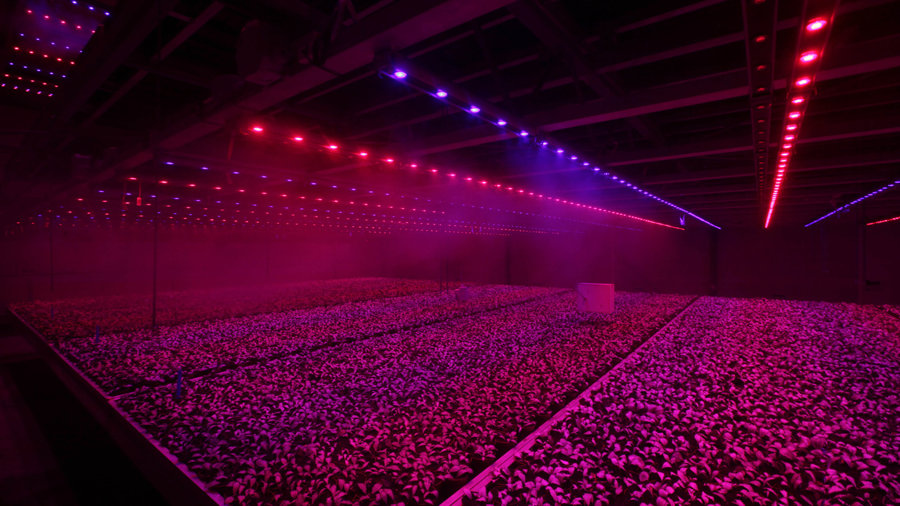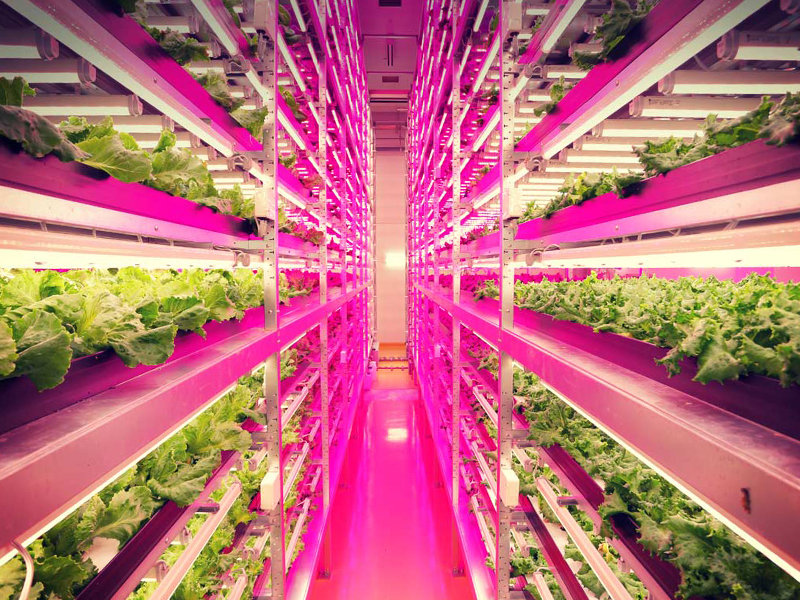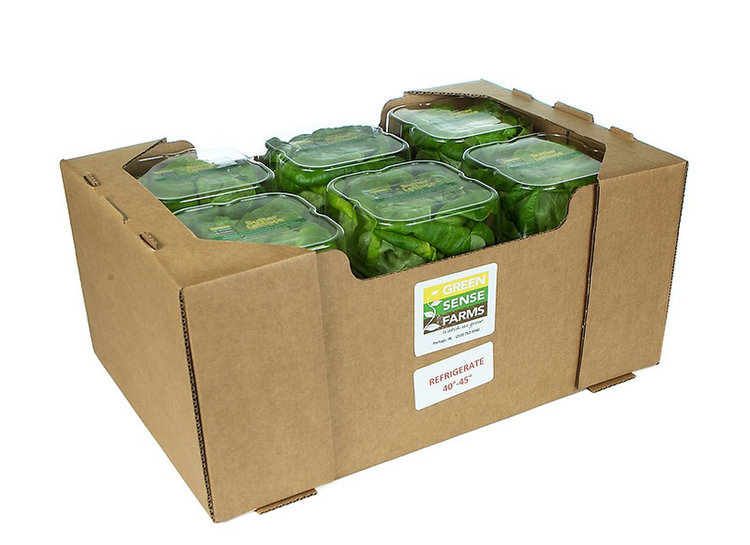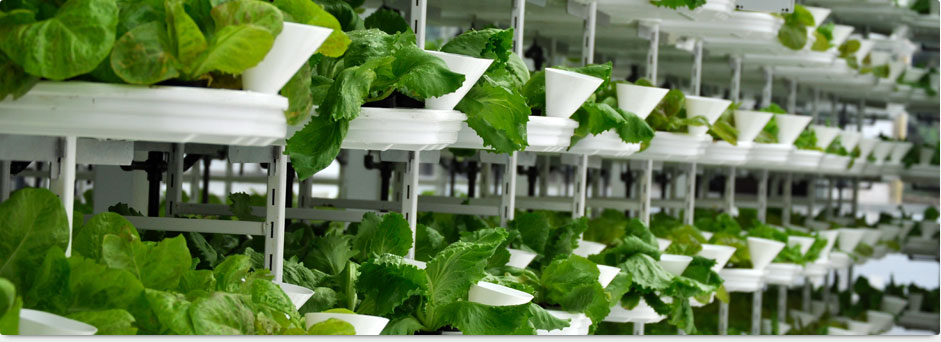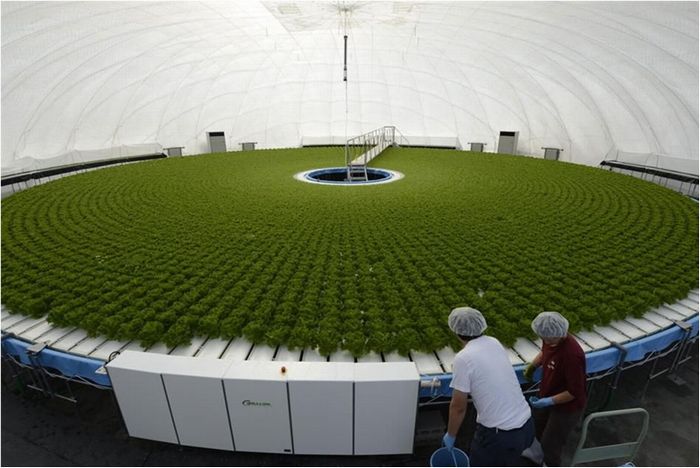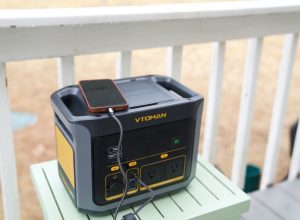This might seem like a scene from “2001: A Space Odyssey” but it`s actually what the future of food production looks like.
Vertical indoor farming is said to be the solution to many of the issues related to feeding the world, food quality and limited amount of arable land among many others.
The benefits it presents compared to horizontal farming are numerous:
- use of 80% less fertilizer
- use of 95% less water
- can be done in any location around the world
- saves transportation costs
- fresher, tastier, better looking food
- faster growth process
- not affected by the change of seasons
- no pesticides
- better protection for the production
With such a wide array of merits, it is no wonder that indoor farming is expected to revolutionize the food production industry. It utilizes vacant and abandoned urban spaces to provide a truly symbiotic existence, not only for the plants but also for the environment.
In order to fully understand the possibilities and future implications, we are going to take a look at the 10 most spectacular indoor farming examples. Prepare to be amazed.
1. AeroFarms
AeroFarms is the name behind the largest indoor vertical farm in the world.
Located in Newark, New Jersey, this vertical farm covers 69,000 square feet. The cost of this agricultural masterpiece is $30 million and will utilize the most advanced technologies such as powerful full spectrum LED grow lights, hydroponics and environmental control. It is a place that truly embodies the next era of agriculture with the capacity to harvest up to 2 million pounds annually.
2. Mirai’s indoor farm in Japan
There are many impressive aspects to this indoor farm, starting with the fact that the facility is an abandoned semiconductor factory from the Fukushima nuclear failure.
It covers 25,000 square feet and holds a production capacity of 10,000 lettuce heads a day. This is made possible due to use of robots, making the process half automated, with expectation for full automation in the future.
You can learn more about the farm by watching this video.
3. Green Sense Farms
Green Sense Farms is located in Chicago and it’s one of the largest facilities of this kind with an area of 30,000 square feet. It features a capacity of 1.5 million tons a year, which is enough to satisfy the needs of 5 states and produces microgreens and baby greens, herbs and lettuce.
The company says that it’s hoping to build LED-lit growing facilities in partnership with colleges, hospitals and military bases.
4. VertiCrop
Meet VertiCrop, one of the pioneers in vertical farming companies that helped start the global trend. In a space of 50 by 75 feet, it has the capacity to match the produce of a 16 acre farm and was even named “one of the world’s greatest inventions” by TIME Magazine.
5. Grandpa Dome in Japan
The Grandpa Dome is a clever hydroponic farm that utilizes a circular plantation system.
The greens are planted in the middle of the circle which rotates and pushes them further out as they grow. By the time the plant goes from the center of the circle to the outside, it is ready for harvesting. It takes thirty days, with the circle rotating for one hour each day.
The local farmers were so amazed by the unusual approach, that the company made a presentation for them before opening. You can learn more about it by watching this video.
6. VertiCulture Farms
VertiCulture uses an aquaponics process, using the waste of 240 fish which is used as a nutrient for the plants.
The plants in turn filter the water, which goes back into the fish tank. This enables them to produce perfectly fresh basil and arugula that lasts a week longer than those sold on the regular market.
“No chemicals, we just rely on the fish,” is what they say from the company.
7. Wigan UTC Vertical Farm
This is the first vertical farm with an educational purpose, enabling the students at Wigan University to gain a deeper appreciation and understanding of the process.
The farm is fully functional, covering an area of 16 square meters with a capacity of 26 crops annually. It uses a rotating hydroponic system, environment control, powerful full spectrum LED grow lights and even a kitchen, for the students to try the produce.
8. Spread
Japan is on the edge of innovation once again, with a project for the first fully robot operated vertical farm, set to open in 2017 as an upgrade to an already existing Spread facility.
The capacity of the farm will be about 30,000 lettuce heads a day, thanks to the robots performing tasks such as planting, watering, pruning and harvesting.
The clever mix of the latest vertical farming technologies with efficient automation truly has the potential to impact the global food industry.
The company says that “the only humans these Lettuces see will be the one who eats them.”
9. AeroGarden
AeroGarden shows us that vertical farming doesn’t have to be only large-scale and can be adapted for home uses.
Based on the same principle of using proper LED lights, controlling the environment and providing nutrients, it is a small agricultural miracle. The AeroGarden lets you grow various plants at home all year round, without the need for soil and pesticides.
You can witness the powers of this marvelous device by watching this video.
10. Circular Symbiosis Tower
The Circular Symbiosis Tower might seem as a distant dream to some, but the ambition of the tower makes it a worthy addition to our list. It is a one of a kind proposition for a livestock vertical farm. The farm consists of spiraling grassy fields going from the bottom to the top and relies on a symbiotic relationship between animals and plants. You can read more about it here.
The Future of Vertical Farming
All of the abovementioned examples share common key features and functionalities, such as powerful full spectrum LED grow lights, controlled and monitored environment, advanced nutrients supply systems and resource management. But still, there is a growing need for further improvements, pressured by global food challenges. Technology suppliers of the industry, such as LED grow lights manufacturers are working tirelessly to make their products better as even the slightest optimization can lead to a tremendous improvement in energy efficiency, heat output and plant growth.
But regardless of the challenges, one thing is clear – vertical farming will hold even more importance in the future.
Author: Nathan Bauer
Nathan is an experienced professional in shipping/receiving, warehouse management, and sales management. He is passionate about writing for technology, automation, and indoor farming. Since 2012 he is a Sales Manager at Advanced LED Lights, a leading LED grow lights manufacturer based in Hiwasse, Arkansas. When not at work, Nathan is out fishing, supporting his Arkansas Razorbacks, or raising his two daughters.
Disclosure: We might earn commission from qualifying purchases. The commission help keep the rest of my content free, so thank you!
